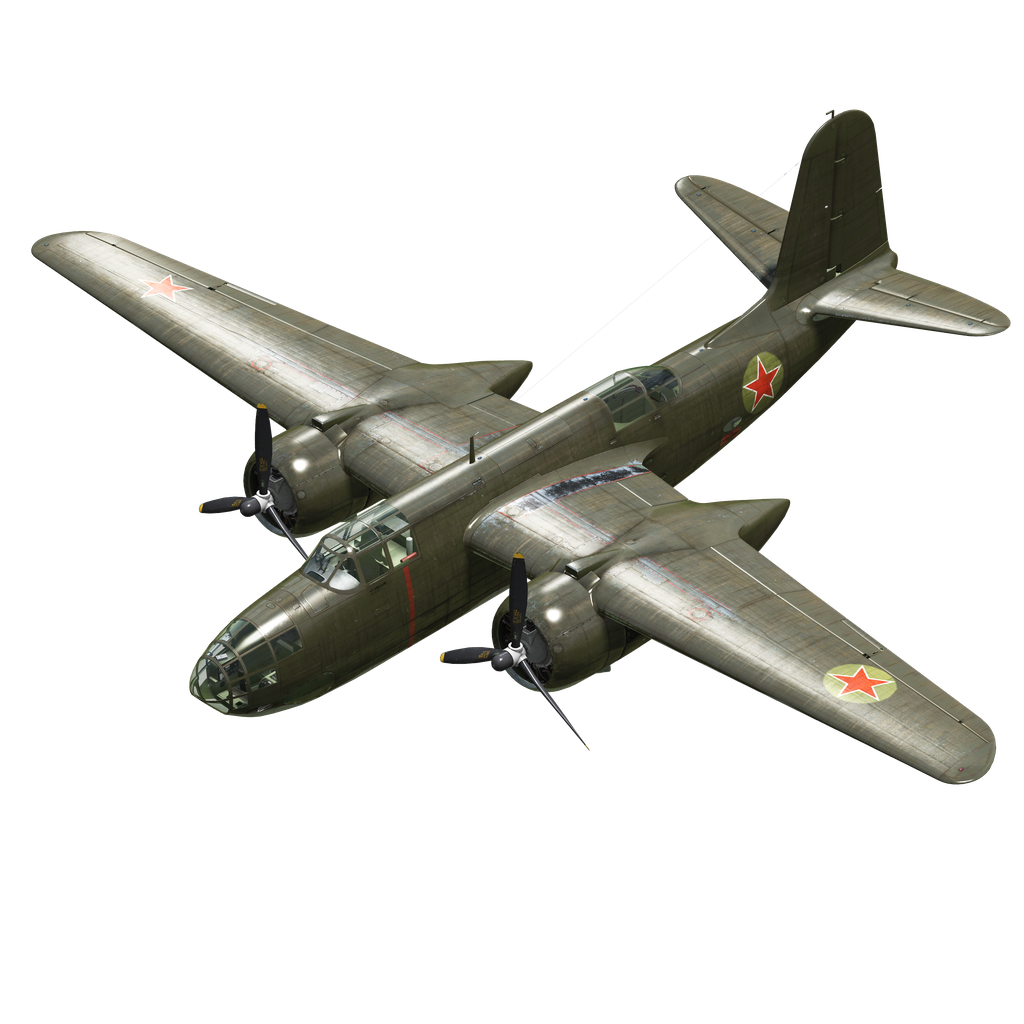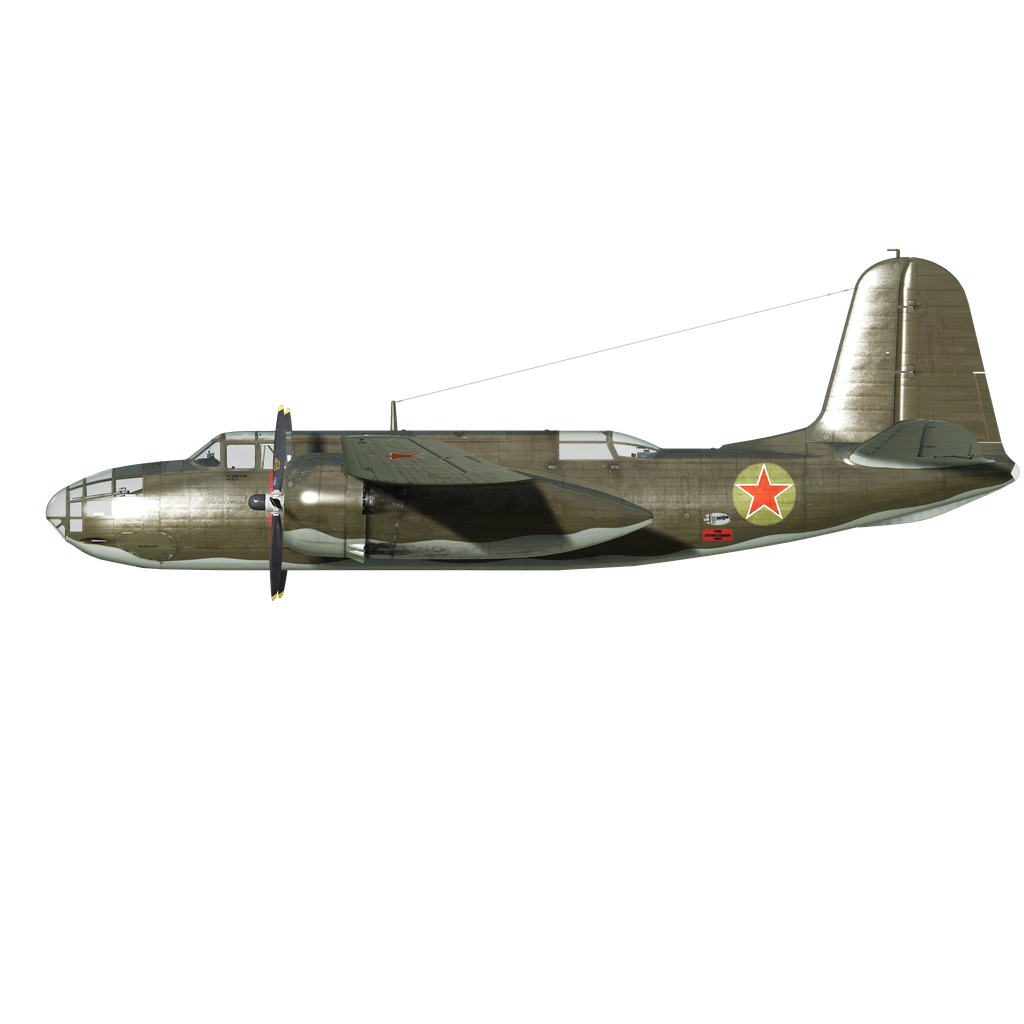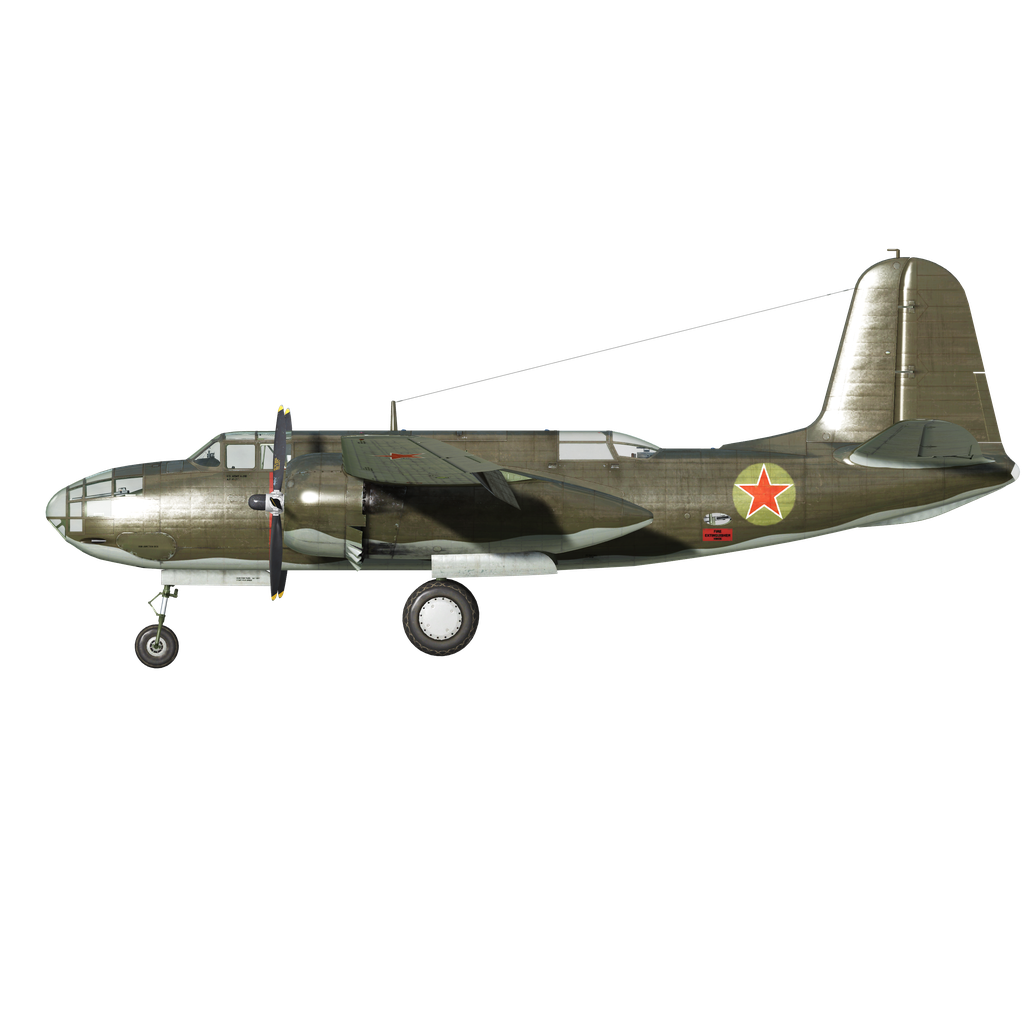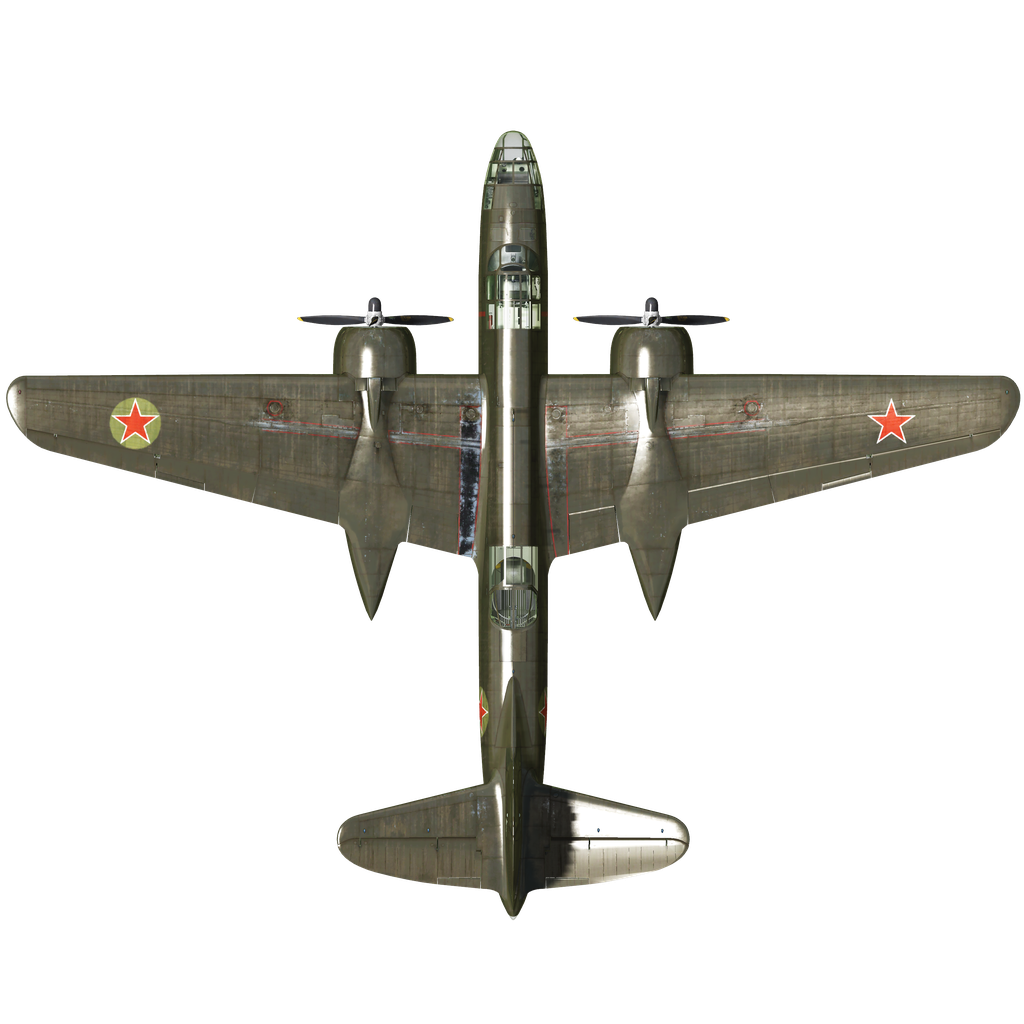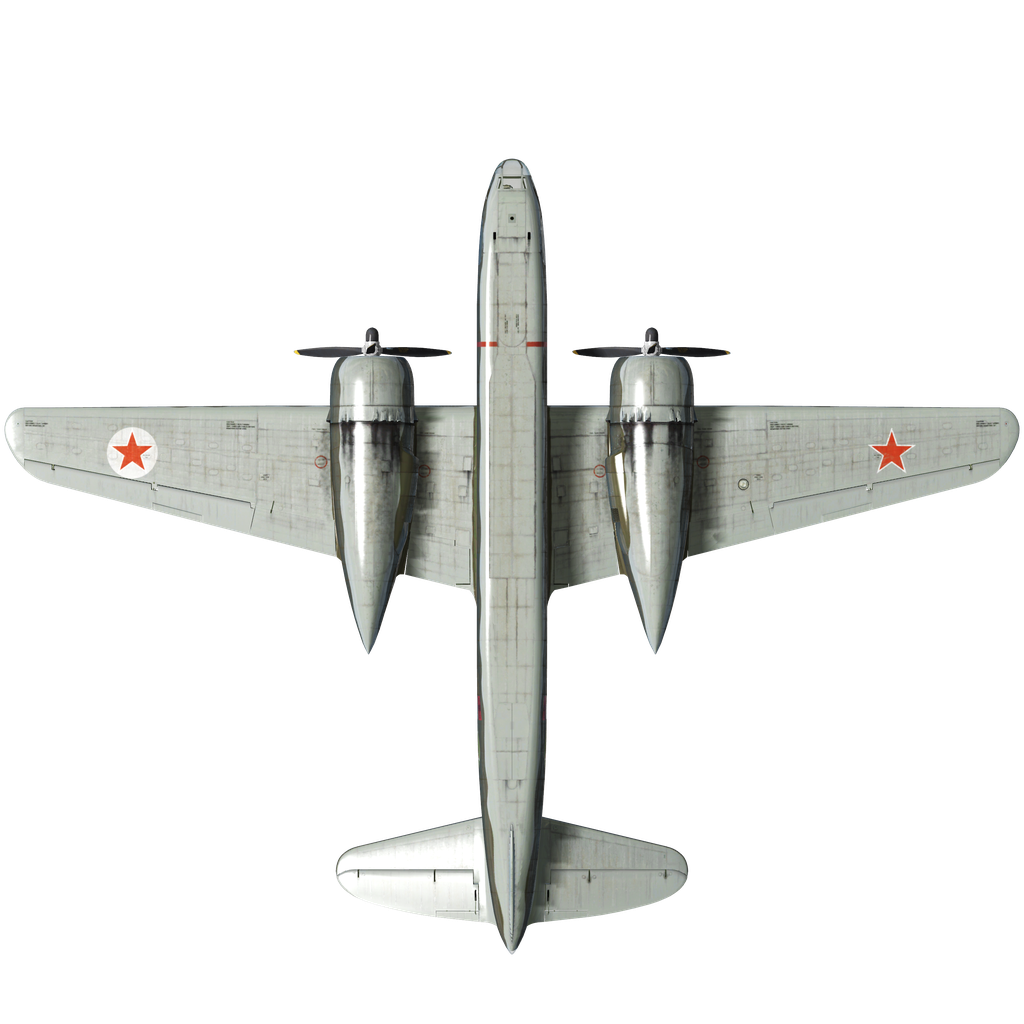The Douglas aircraft was developed from 1936 as a heavy twin-engine unarmored attack aircraft. On October 26, 1938, the first "Model 7 B" took to the skies. However, the French were the first to purchase the aircraft, as a DB-7 bomber with modifications to the original design. However, the French version was not liked by the American military. As a result of the next changes, a new variant of the plane appeared. It was an all-metal, twin-engine monoplane without external struts, with a single wing and three-wheel retractable landing gear. The U.S. Army Air Corps ordered two modifications: the A-20 turbocharged with powerful Wright R-2600-7 engines and the A-20A "Havoc" turbocharged with R-2600-3 engines. Production of the A-20B modification began in September 1941.
The A-20B was fitted with Wright R-2600-11 Cyclone engines, different nose glazing, and a modernized rear bomb bay for horizontal (instead of vertical) bomb storage. The latter improved bombing accuracy. This modification allowed for the first time the installation of additional fuel tanks in the bomb bay. They were to be used when ferrying bombers over long distances.
The A-20B was originally designed with a strong defensive armament: 2 remote-controlled turrets with two dorsal 7.62 mm machine guns and a third in the nose. However, such armament was considered bulky and not effective enough. Therefore the number of machine guns on the A-20B was reduced, but their caliber increased. Now there were only 2 large-caliber machine guns in the nose. The same machine gun was installed in the upper gunner's turret. In the lower hatch, there was still a machine gun with a caliber of 7.62 mm. The A-20B also retained the DB-7B and A-20A rear-facing nacelle mounts (they were not installed on all aircraft).
A total of 999 models of this modification were produced.
The combat experience of the A-20A in the Pacific Theater showed that the aircraft was very vulnerable as an attack aircraft due to its poor armor protection and inadequate defensive and offensive armament. In the United States, most of the A-20Bs ended up in training units. At the front, a group in Morocco and a reconnaissance squadron in England were equipped with them. The U.S. Navy received eight A-20Bs. Most of the aircraft were delivered by Lend-Lease to England and the USSR. In England, the plane was named "Boston". Under this name, the A-20B was also used in the USSR.
A total of 665 of these aircraft were delivered from the fall of 1942. Here the aircraft were used very successfully as front-line bombers. Soviet pilots noted good controllability of the aircraft, comfortable cockpits for the pilot, and navigator with a good set of instruments. They also noted the good maneuverability and reliable operation of the Wright Cyclone engines. The weak defensive armament and the small bomb load, which did not allow for the attachment of large caliber bombs, were noted as disadvantages. However, the planes that entered service with the Air Force were heavily modernized. Soviet bomb carriers were installed, and sometimes the small arms were replaced. The modernized aircraft could carry up to 2 tons of bombs. Crew size was also increased with the addition of a second gunner for defense of the lower hemisphere. The A-20B outperformed the Pe-2 in standard bomb load and speed by 10-15 km/h. It was slightly inferior in ceiling. In general, the aircraft met the requirements of the war on the Soviet-German front.
In addition to front-line service, the Bostons were widely used by the Soviet Navy as torpedo carriers and reconnaissance aircraft.
1. "American Warplanes of World War II" by David Donald, 1995
2. V. Kotelnikov, O. Leiko "Created for Battle" Journal "Aviation and Cosmonautics".
№1-2 1995 г
3. Materials of the site airwar.ru
